In my last column we took a long, retrospective look at a little Camillus knife that was a big part of my life. I own a whopping total of two Camillus knives, and this is the other one. It is simultaneously slightly more interesting (mechanically) and quite a bit less interesting (historically) at the same time.

But it’ll also allow us to explore how the mighty have fallen, and that sounds like a good time.
For us, that is. Not them.
Camillus Cutlery’s story arguably began as far back as 1876, but they became an actual manufacturer of knives, rather than just an importer, in 1902. You can learn this by reading the back of any of their modern packages, because their current owner still harps on it as if they deserve the credit. This despite not having a damn thing to do with any of the original 130 years’ worth of operation.
Camillus made a lot of knives for a lot of years in their factory in the town for which the brand was named in New York. They produced knives under their own name as well as several other sub-brands over the years, including the Camco brand of my little jack knife, and were also an OEM manufacturer for some other labels behind the scenes.
But in the early 2000’s, Camillus was in trouble. It’s the same old sad story we’ve heard a hundred times before: Pressured on one side by cheap imports undercutting them and boxed in on the other by failing to keep up with the times, Camillus’ sales were declining and their financial situation was becoming increasingly untenable. By 2006 they could not afford to pay their workers and there was a strike. The shutdown certainly didn’t help matters but it’s probable that even without it they wouldn’t have fared much better for long. Ultimately their creditors called in all their loans and Camillus ceased operations entirely on February 28th, 2006.
You can read more about the whole sordid affair here, once again thanks to the excellent Collectors of Camillus web site. It’s beyond the scope of me recapping in detail here. I’m no historian. I certainly wasn’t an expert back then and I’m still not now, and arguably I wasn’t even paying attention at the time.
Camillus was definitely a name that was around back in the day when I was getting into knives good and proper. There are now just as much as back then people who were into collecting their knives big time, but I certainly wasn’t one of them. They just didn’t make anything that interested me, and I’m sure that sentiment – though not from me personally, mind you, with my insignificant pocket change – probably didn’t do them many favors towards the end.
You can take a look at this 2005 catalog, to see what I mean.
Modern options were fairly few in Camillus’ lineup. But modern was on the up-and-up in the 2000’s, and tactical was in. We wanted black knives with fast draws and tanto points and spring assists and trick mechanisms, and Camillus was that company still making solid old stag handled grandpa knives. Their slim selection of modern-ish offerings weren’t looking too attractive compared to, say, the Benchmade Skirmish and Osborne, Cold Steel’s Ti-Lite and Recon, or hell, even the crusty old SOG Trident – All of which were their contemporaries. And lots more besides.
Camillus did have a couple of offerings that looked like they ought to at least belong to the 20th century, and I’ll bet I handled most of them at least once back in the day. As far as the folders went, anyhow. And my takeaway at the time was that, allegedly fine though they may be, they didn’t feel any less plasticy than the Chinese competitors that were allegedly eating their lunch. Meanwhile, Cold Steel knives had ninja cred. Benchmades were bad ass. Our soldiers were kicking ass in the desert with SOGs. So who wanted a boring old Camillus?
After Camillus closed up shop, ultimately the brand was acquired by the Acme United Corporation but what rose from the ashes is not the same Camillus that once was. Not a single blade marked “Camillus” is made in New York anymore – The every one of the knives you see branded Camillus today are exactly the kind of largely indistinguishable disposable cost-cut Chinese made crap that helped put them out of business in the first place. Things destined to do nothing more than hang on a peg in Walmart.
The Knife
Which brings us to this.
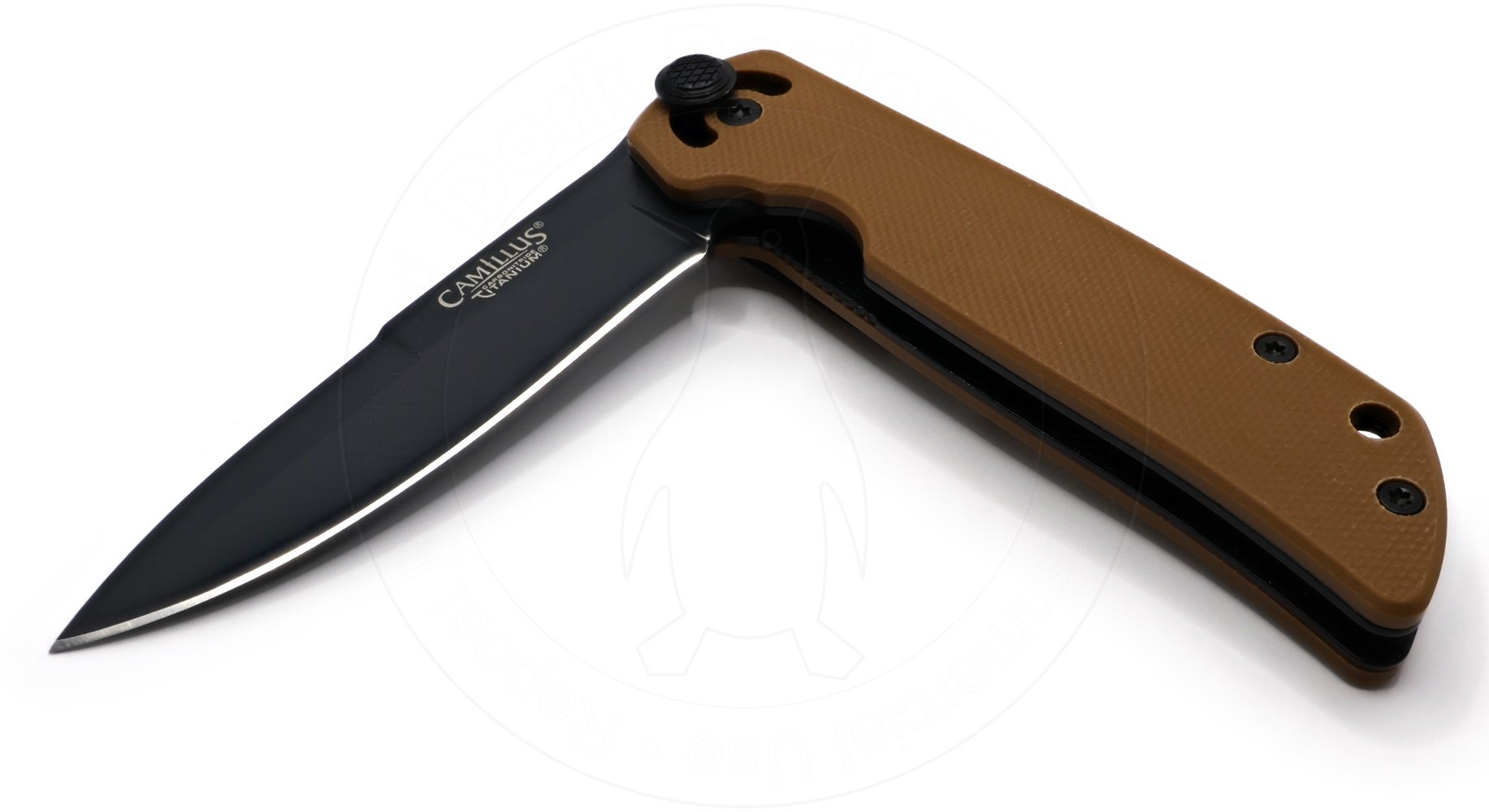
This is the Camillus Cuda Mini. Or, perhaps, “CUDA,” since it’s supposed to stand for “Camillus Ultimate Design Advantage.” Cuda therefore isn’t really a model as such, but a moniker applied to various Camillus knives both now in their zombified brand form and also historically, from the before-times.
I got the Coyote Brown version, because black is boring.
It unavoidably raises the question of whether or not, or perhaps why, any garden variety chump with the better part of $30 burning a hole in his pocket ought to buy this rather than the veritable galaxy of similarly-priced-or-better run of the mill budget Chinese knives.
The answer turns out to be probably no. But that’s not going to fill all these inches.
I was of course drawn originally to this because it is, yes, slightly weird.
That, and I wanted to see just how bad modern Camillus knives really are, since everyone seems to say so all the time. Well, they do in my circles, anyway. I don’t know what you normal people talk about at parties.
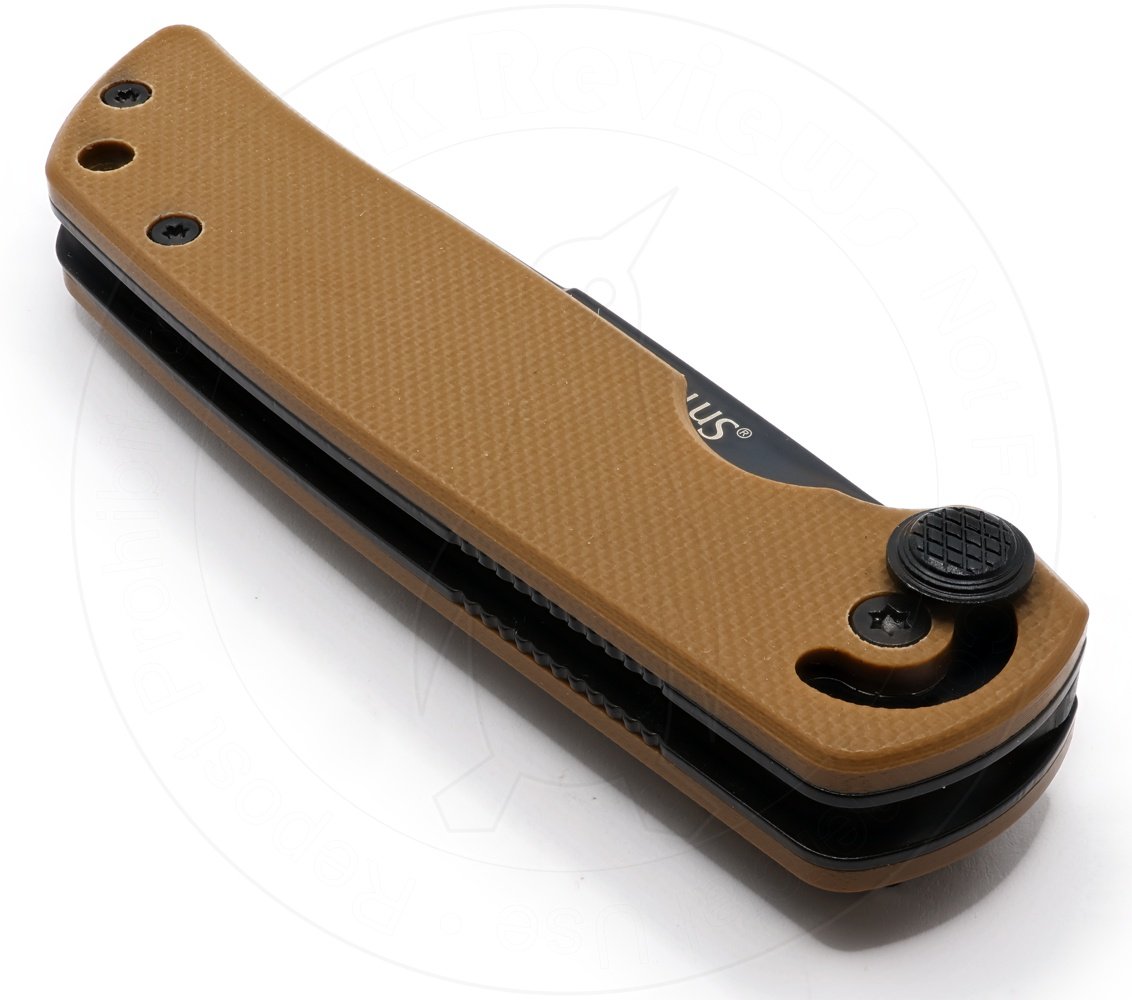
The Cuda Mini is a compact folder with quite a few modern design elements. The back of its card lists a G-10 handle (scales), liner lock, “Carbonitride Titanium®” stainless steel blade, and the “Quick Launch Bearing System.” More on that in a bit. First, the packaging.

Because there are several things to, er, unpack.
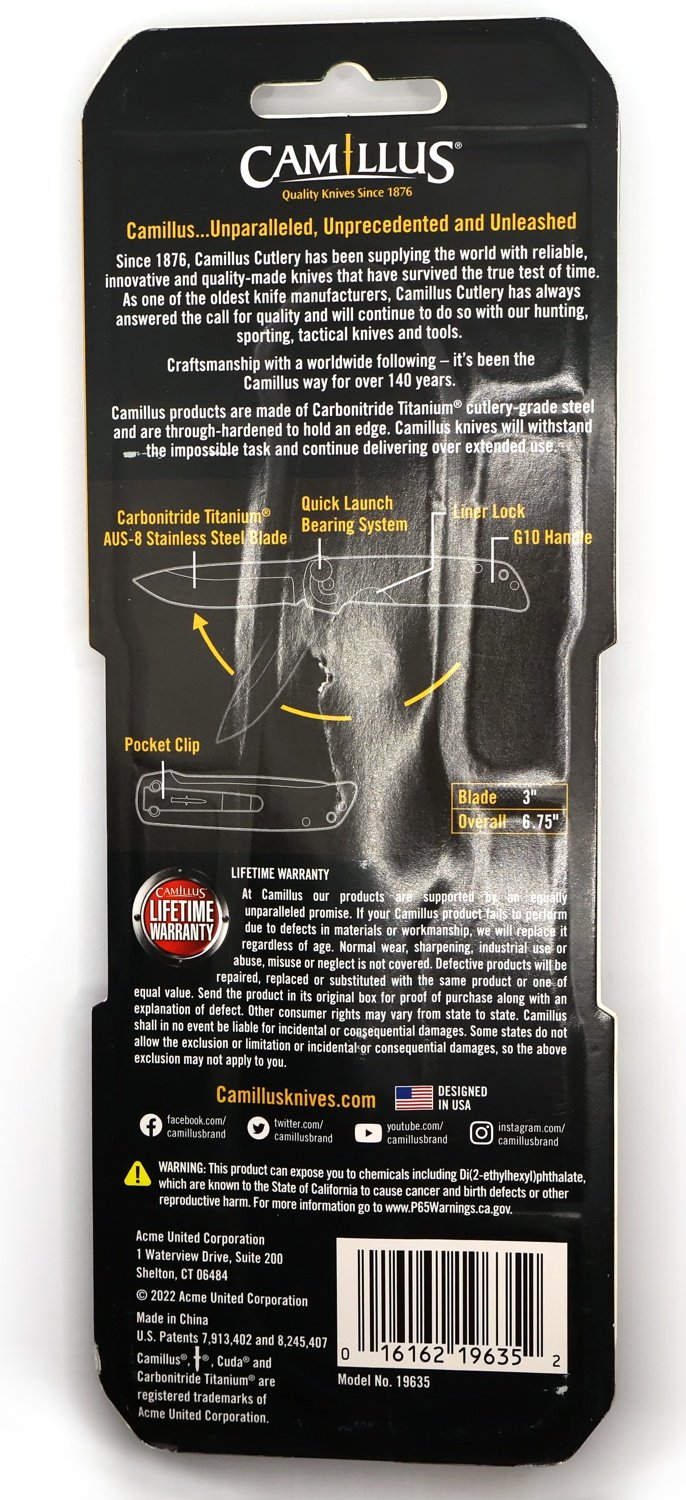
First of course is the aforementioned paragraph at the top full of chest-beating over Camillus’ history, as if their current owner didn’t simply write a check for the name and stuff the corpse into an ill-fitting suit, held up with a broomstick up its butt à la Weekend At Bernie’s.
The second thing I would like to draw your attention to is the “Lifetime Warranty,” promising to repair or replace your knife – provided if and only if you return it in its original packaging. So you’d better not throw out that card.
(Yes, eagle eyed readers will note that I slipped the knife back into the card for the photo above. I still have the card, partially because of that stupid warranty clause but mostly because I retain the packaging for almost all of my knives, no matter how silly it is.)
The third thing is the prominent “Designed In USA” next to the flag. This is probably the oldest dirty trick in the book, since designed here obviously doesn’t mean made here, even if they’re wishing hard you’ll think it does. The real answer is the little “Made In China” mark further down. All this combined with the capsule history at the top is obviously meant to bamboozle the uninitiated into forking over their money under false pretenses, believing they’re about to do the wholesome thing by purchasing a knife with a little American flag on it – as if this means anything other than some rat bastard’s printed a little American flag on it.
There’s nothing wrong with a Chinese knife, per se. I like a good Chinese knife, as we all know. But at least be honest about it, for fuck’s sake.
There’s also a stern Proposition 65 warning indicating that this knife may expose you to Di(2-ethylhexyl) phthalate, presumably from the scales, which may kill your sperm or perhaps shrivel your balls. Fuckin’ A.
Anyway, you can view a more legible scan of the card back here, if you’re so inclined.

You’ve probably also noticed the Cuda Mini’s weird thumb stud thing. Here’s the deal with that.
The Cuda Mini is not, surprisingly, a spring assisted knife. It’s a plain liner locking folder with a 3" blade length, so it’s probably devised with widespread legality in mind.
Instead, it has its oddball little opening system which is yet another entry into our Technically Not Legally A Switchblade series. It seems a bit counterintuitive, but you open it by pushing the stud forward, not up, whereupon it automatically follows its track and snaps the blade open once you’ve overcome the traditional ball detent in the liner.

Despite at first blush appearing to be laid out a manner that’d make opening it physically impossible, it’s actually not that difficult to use, although it’s a trifle weird feeling.
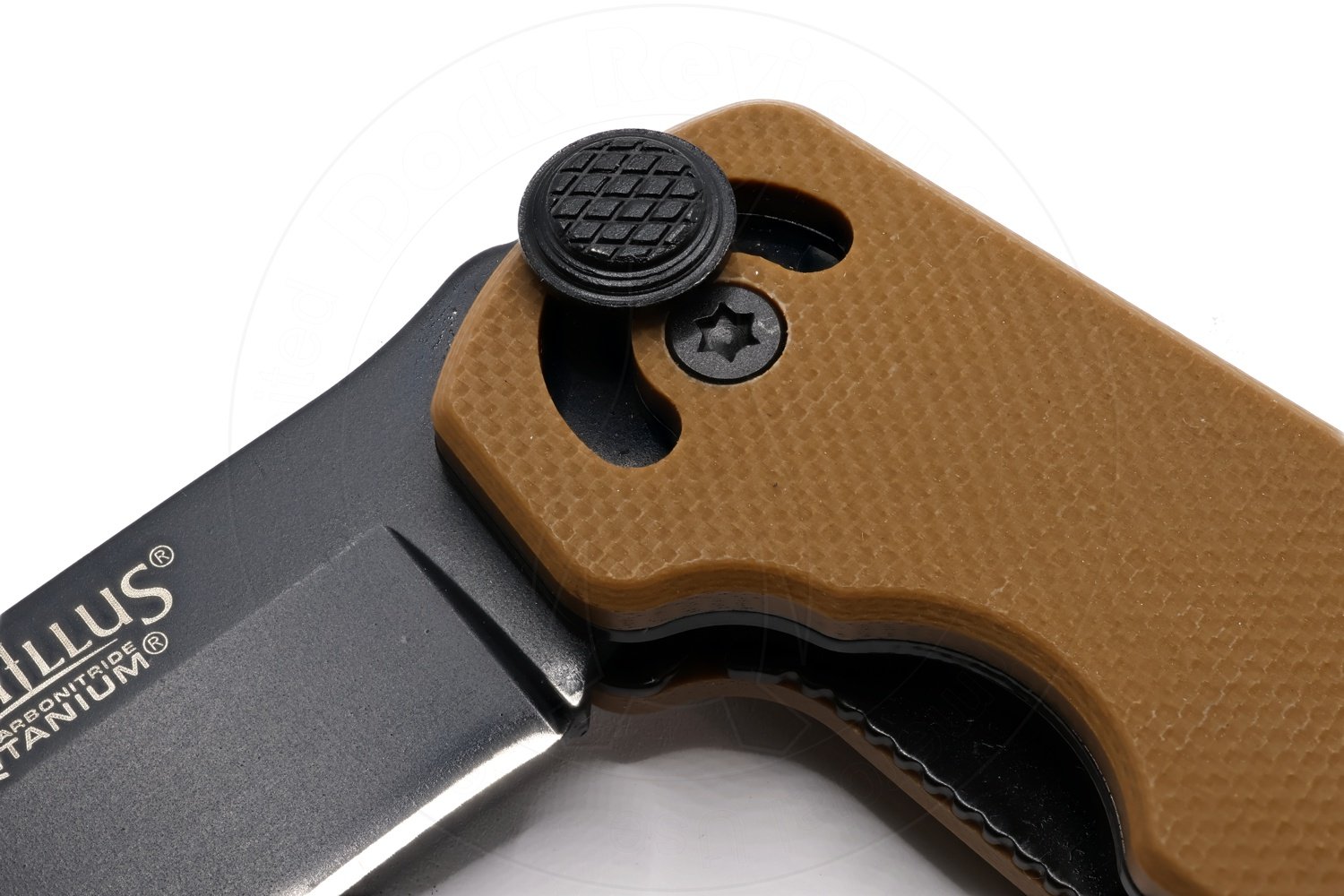
This is one of those things like the mechanics of steering a bicycle, where if you asked someone right on the spur of a moment to describe what action they perform to open their knife, what they tell you would probably actually be wrong. You might think you press the thumb stud on your normal knife forward, too, then up and around. But you don’t – You actually push it down, away from the knife’s handle, or possibly somewhere in the neighborhood of 45 degrees at most, in order to get the blade to move.
On a normal knife the push-forward strategy would be rather like trying to lift your fat friend on a seesaw by running up to the fulcrum and giving it a right kicking. Yes, a sufficient amount of force is theoretically there, but it’s not quite going in the right direction.
This doesn’t work like that. Once you figure it out it becomes easy to use.
The long and short of it is that this all works because the stud is actually out in front of the pivot point at all times, and never passes behind it at any point in its travel. This is more akin to a front flipper knife, and unlike a traditional thumb studded one.
The Specs
The Cuda Mini does, at least, manage to live up to its name. It is 6-3/4" long precisely when open, 3-3/4" closed, and you win no points for guessing it has a 3" blade. It’s 0.463" thick across the scales, so neither slim nor exceptionally chunky, 0.628" including the opening stud and 0.803" at its thickest including both the stud and the clip. With two full length steel liners it rings in at 78.8 grams or 2.78 ounces.

The blade is hollow ground, 0.108" thick at the spine, drop pointed with a false edge on the back for about half of its length, and is made of AUS-8.
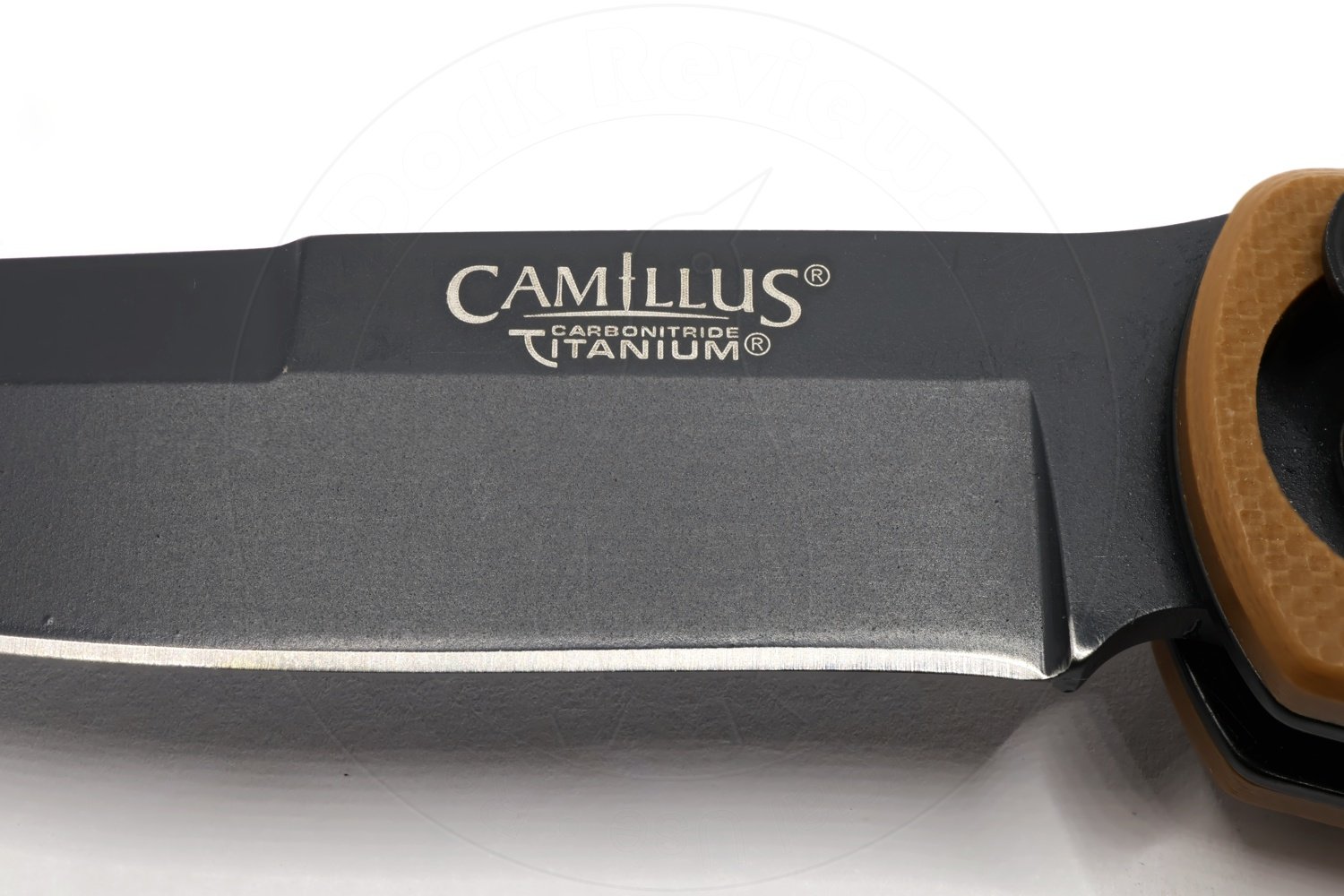
Sorry, “Carbonitride Titanium®” AUS-8.
Acme, speaking through Camillus using them like a sock puppet, try very hard to make this sound much more technical than it is. AUS-8 is very nearly identical to 440B and functionally interchangeable with the same, so in our current cyberpunk dystopia where you can score D2 folders for five bucks it’s actually quite a low end steel. It might’ve cut it back in 1999, but these days our tastes run a little more refined.
The titanium carbonitride coating, aside from having its name reversed so it can be trademarked, is in fact identical in composition and application to what other manufacturers simply term a “PVD” or physical vapor deposition coating. There are various coatings that can be applied this way and they’re not all the same, but TiCN is quite common and definitely not unique to this knife or any others like it.
TiCN is more scratch resistant than silkscreened, painted, or epoxy coatings. But it’s still nothing special.
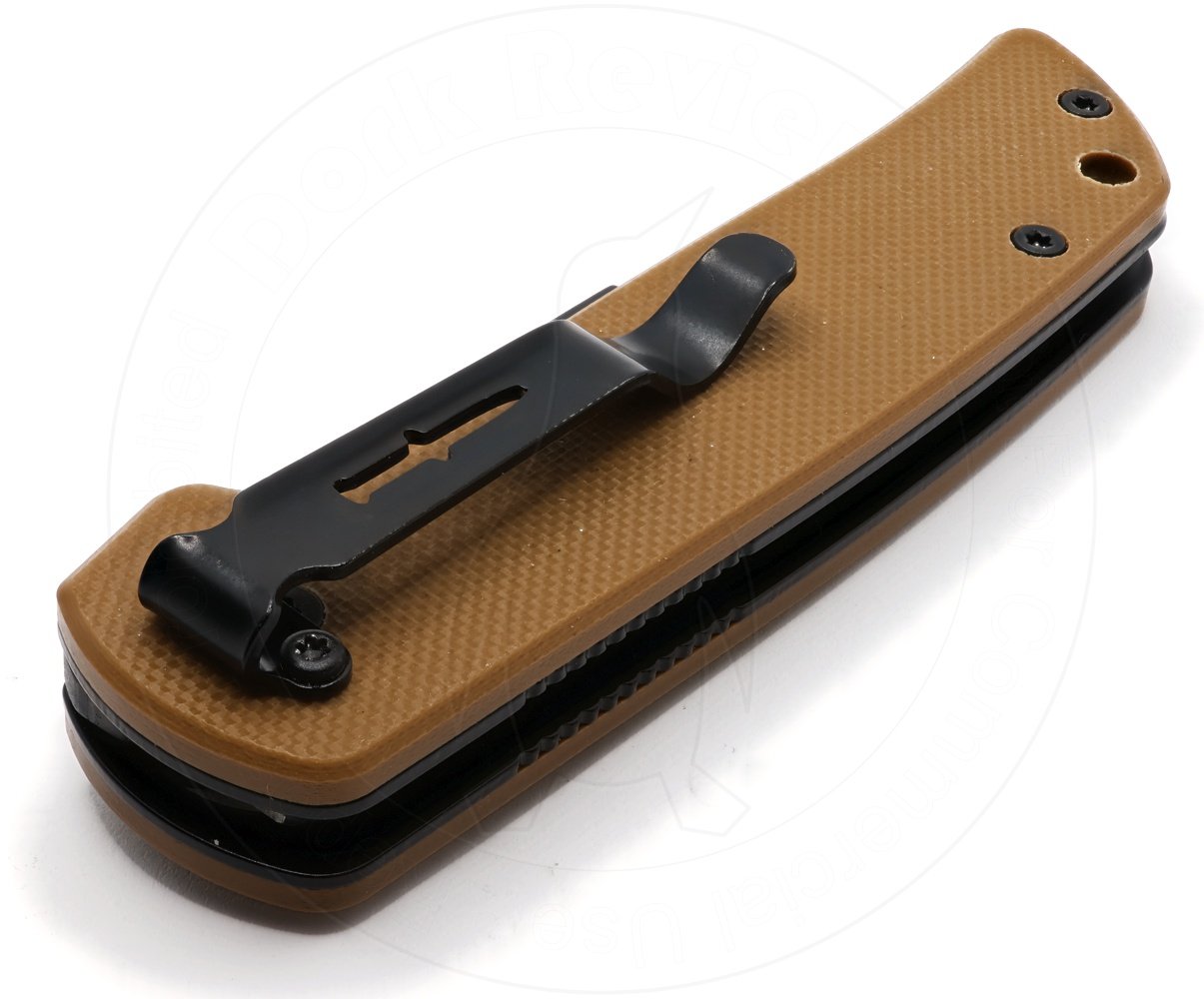
The Cuda Mini has a deep carry pocket clip with trendy Bechmade-eqsue side screws flanking it, although it’s got one and only one mounting position which is tip down, spine forward for a right handed user. There’s only an opener stud present on one side, too, because otherwise it would conflict with the clip. Left handed users are instead encouraged to inflict an airborne indignity on an ambulatory baked confectionery product; whoever designed this clearly wants nothing to do with you.
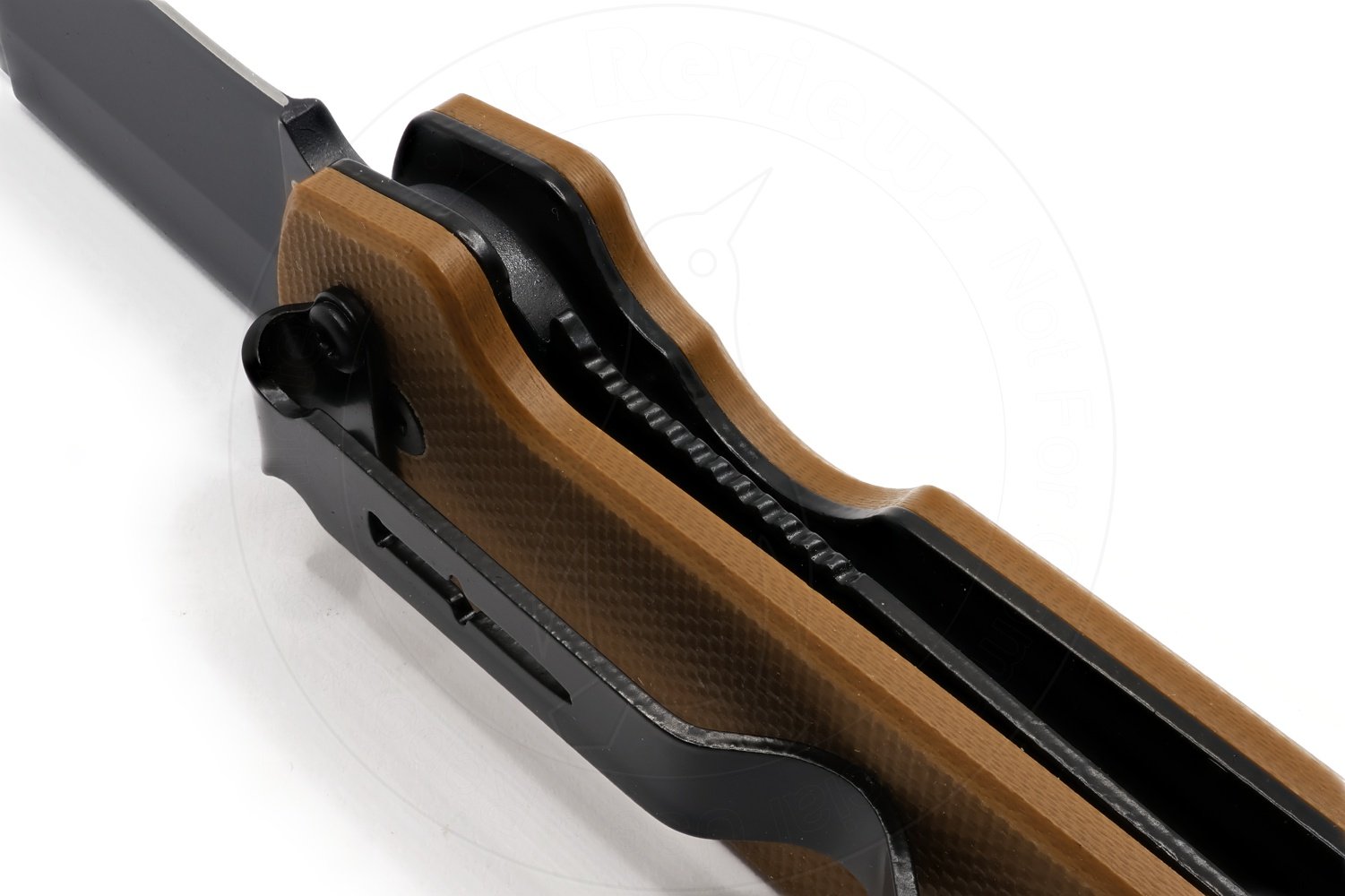
And despite the gimmick opening setup, the Cuda Mini is otherwise a very plain Jane liner locker underneath. The lock is completely bog standard, although there is a generous cutout in the opposite liner and scale to help you reach it.
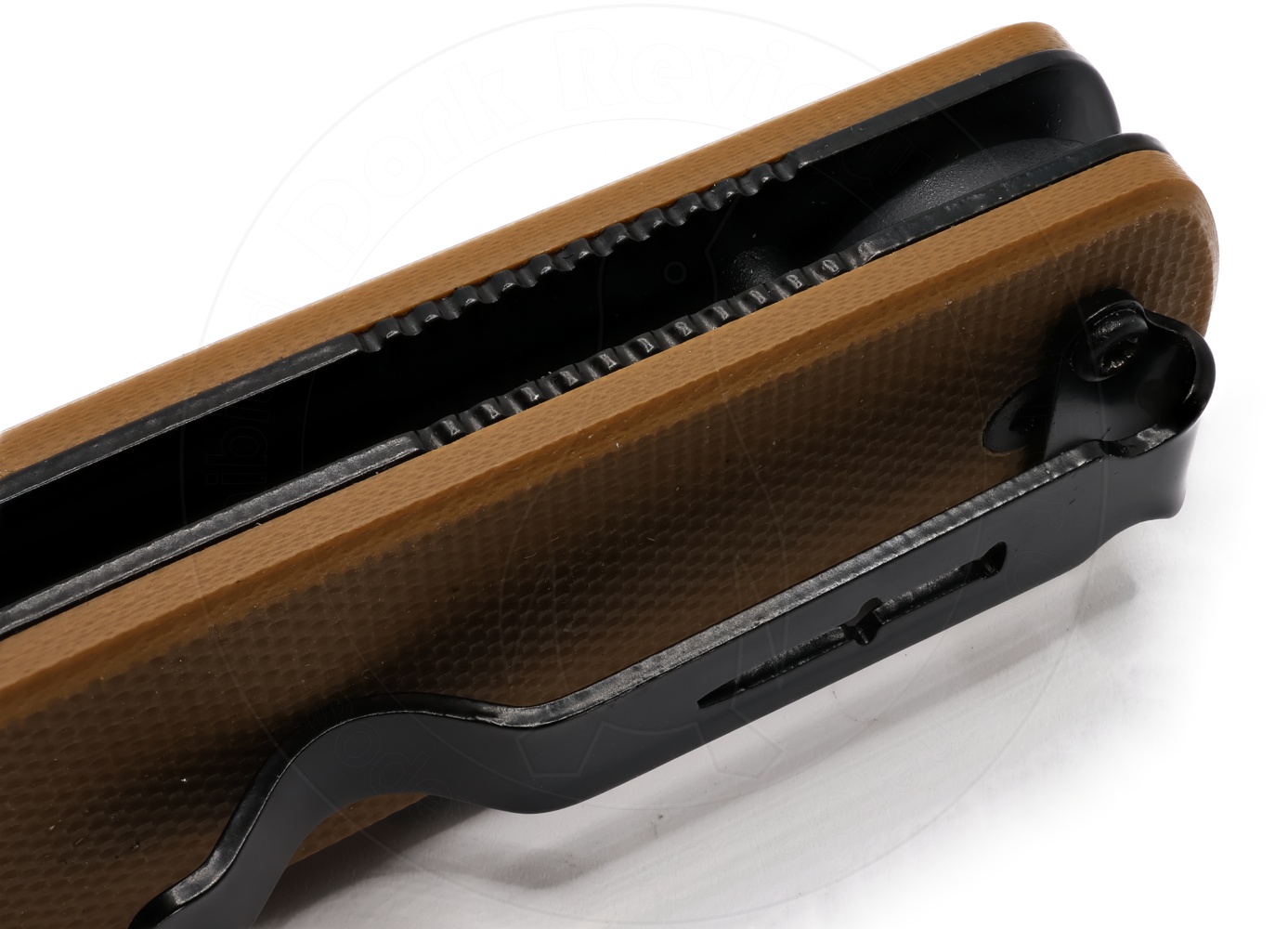
There’s some jimping set into the liners on the spine, but strangely far back. If you hold the knife in a natural manner, this actually winds up quite a ways behind where your thumb wants to land. I’m not quite sure what’s up with that.
The Parts
It’s likely nobody expects you to actually take the Cuda Mini apart. That says a lot more about the people expected to buy it rather than whoever designed or manufactured it. I had a hunch the opener stud, which is sunk directly into a hole in the blade itself, would be a bugger to remove. And it is.
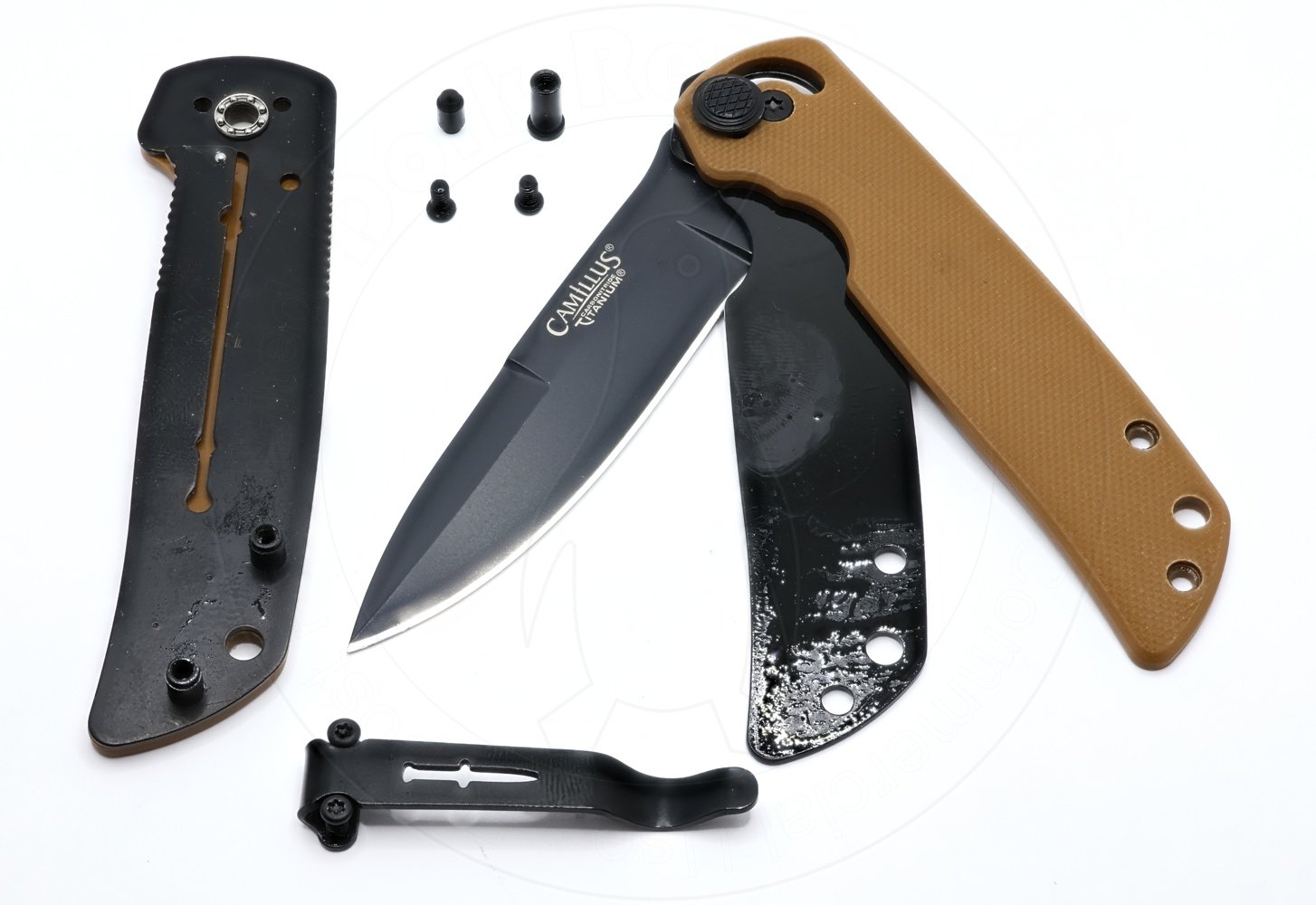
Unfortunately, it also holds one of the scales captive. So I left it like you see here.
Inside there’s a liberal slathering of grease all over everything. Maybe that’s where all the Di(2-ethylhexyl)phthalate is.
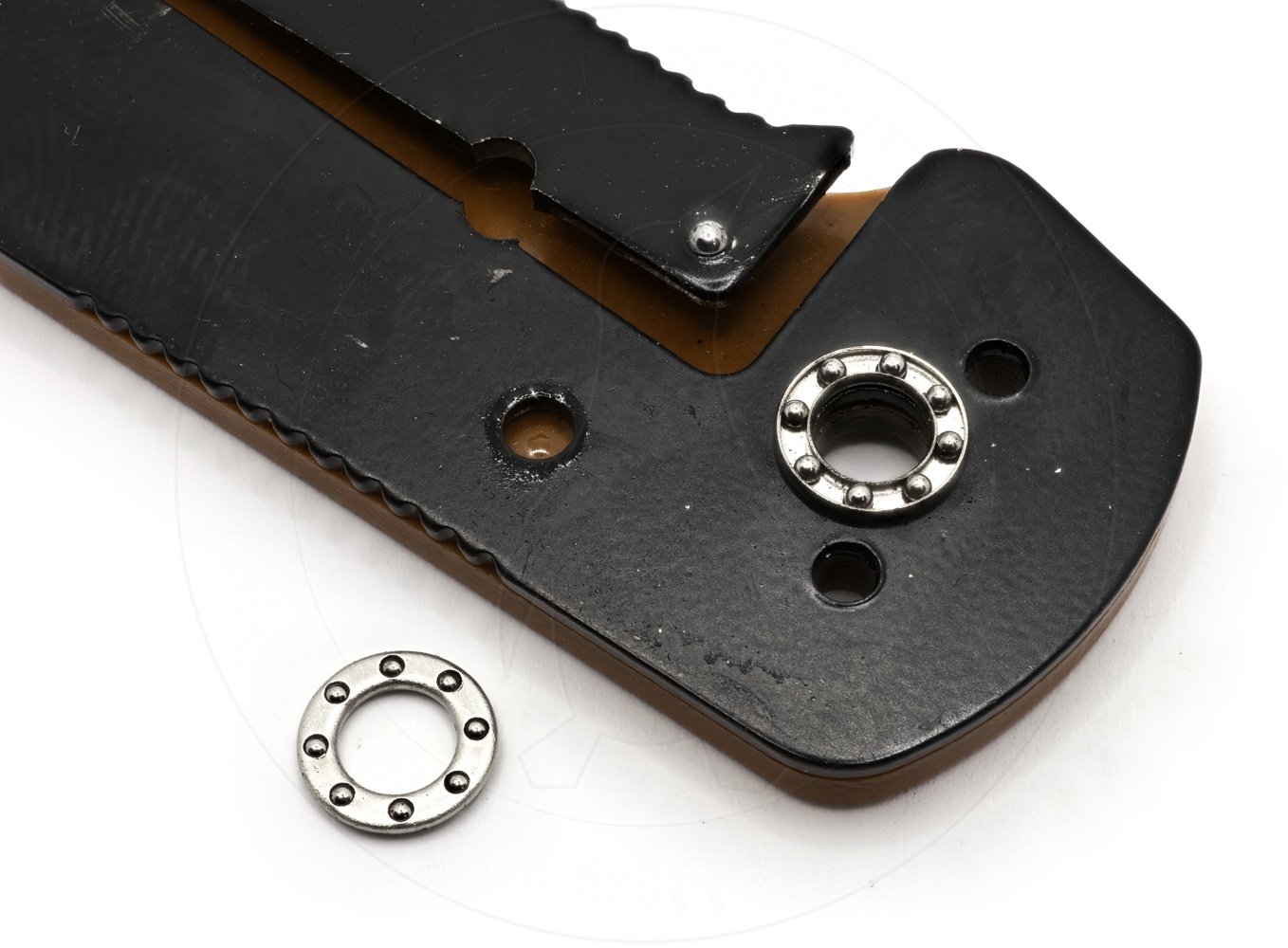
Here’s that “Quick Launch Bearing System” the back of the card was talking about. The Cuda Mini is indeed a ball bearing opener, and this probably goes a long way towards explaining why its goofy layout still results in a folder that’s actually possible to use. With it you get all the usual thrust ball bearing benefits like buttery low resistance action, very decent blade centering despite being a cheap liner locker…
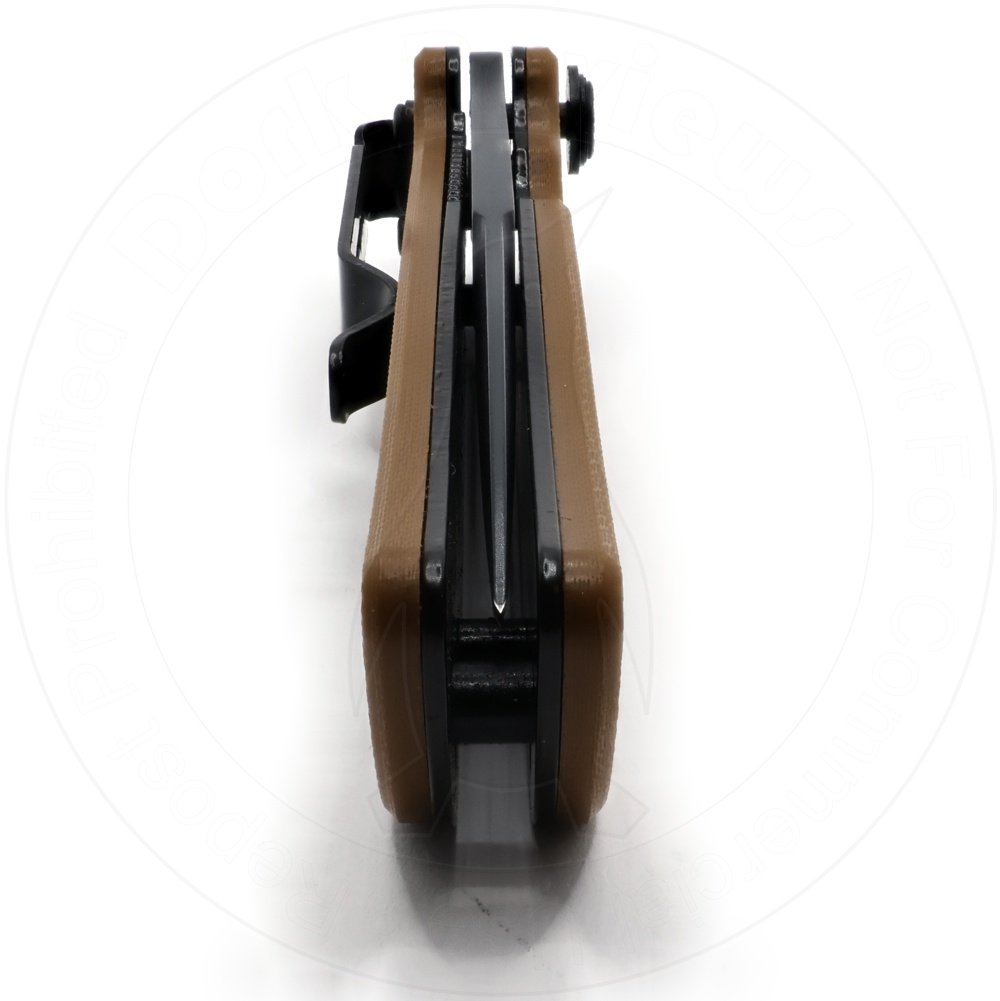
…And a near zero amount lash in the pivot when the blade is locked open, which helps the knife superficially feel much more premium than it is.

Here’s the back side of the opener stud where it goes through the blade, and it appears to be peened in place after installation. That, or it’s possibly glued. Or both. Removing it without marring it in some capacity is absolutely impossible, so I left it alone.
Everything else is a normal Torx screw: T8 for the pivot, T6 for the rest. For maximum cost savings the pivot screw does not have an anti-rotation flat in it, but if you’re never expected to take this apart I guess that doesn’t matter.
The Catch
Regardless of anything else you can say about it, the Cuda Mini actually has a decent feel in the hand. It has a nice weight, its assembly is very rigid, and anyone who didn’t know any better would be led to believe, just via the usual method of hefting and frowning at it, that it must be a nice knife. That’s how they get you.
Is it actually, though? To find out, I did a little cut test.
I don’t normally go in for this sort of thing in my writeups because I know that the factory sharpness of any given knife is really just an entertaining opening argument to what kind of edge it ultimately could achieve once you’ve had your little way with it. And if it’s a novelty thingamabob, as so many of mine are, you’re never going to actually use it for anything anyway. So what’s the point?
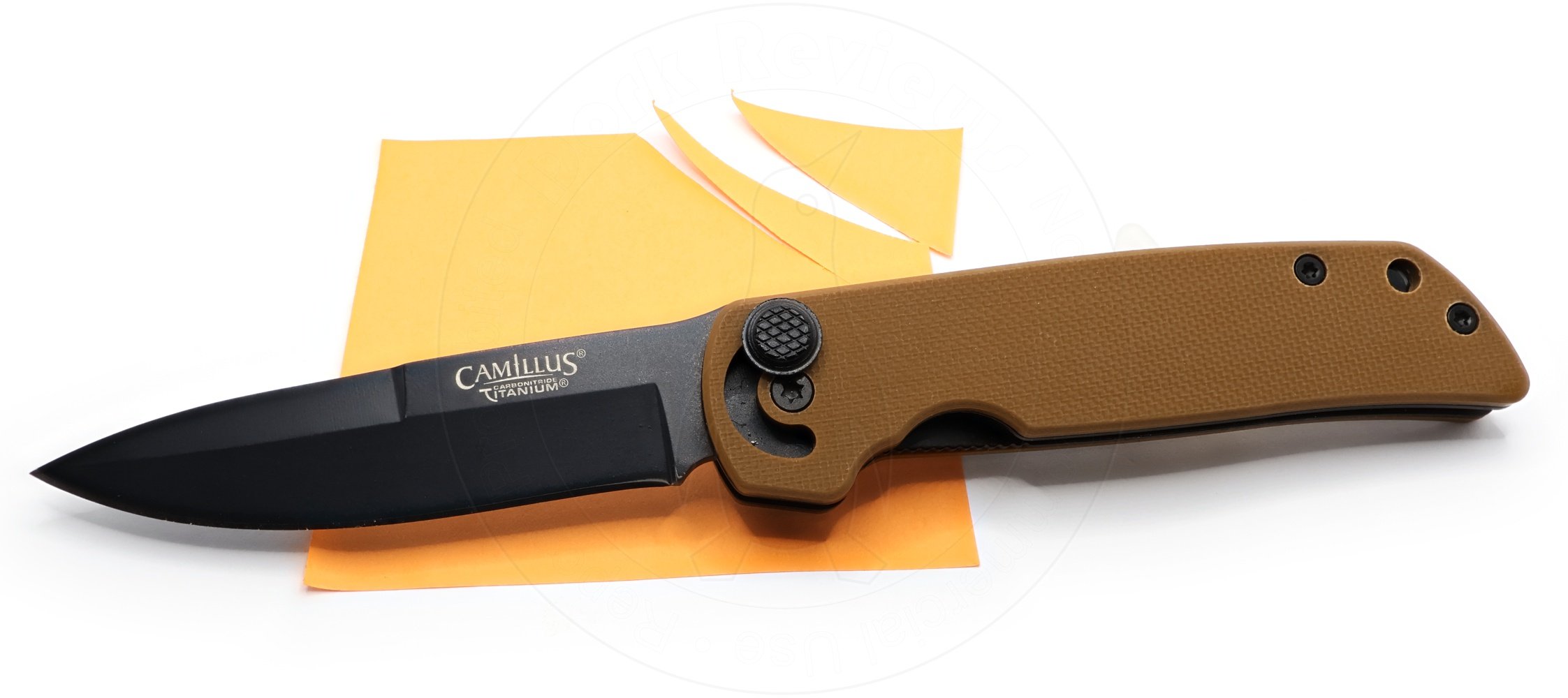
But I had at it with a Post-It note anyway, just to get the lay of the land. And I immediately ran into a snag. Literally.
Those two cuts were as far as I got before I determined something was wrong. It failed to even complete the second one, as you can see.
Why? Well, for the most part, the Cuda Mini has an edge grind on it that’s almost exactly what you’d expect from a budget knife.
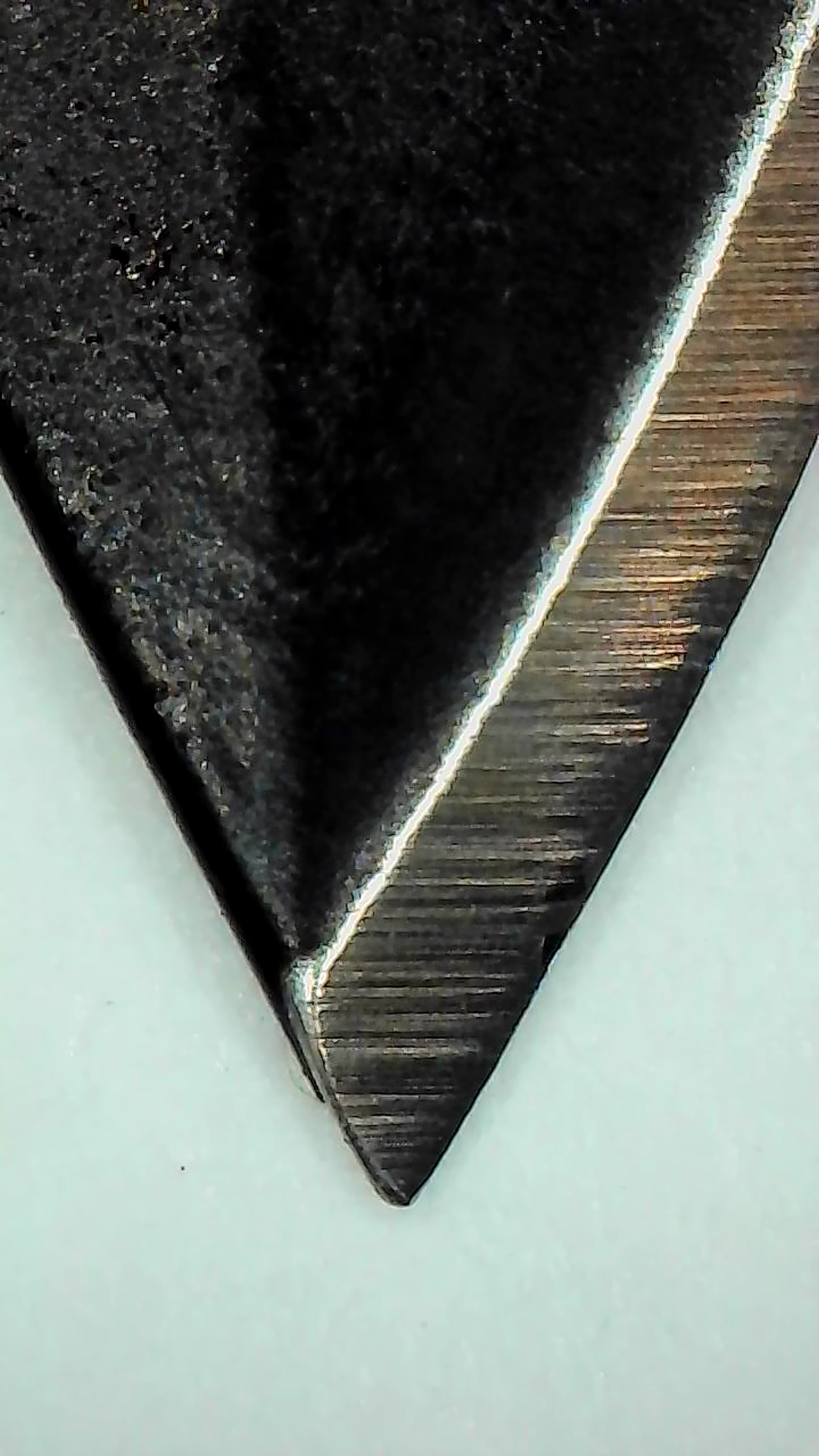
The grind is reasonably even down its length, and the point profile is actually pretty good.
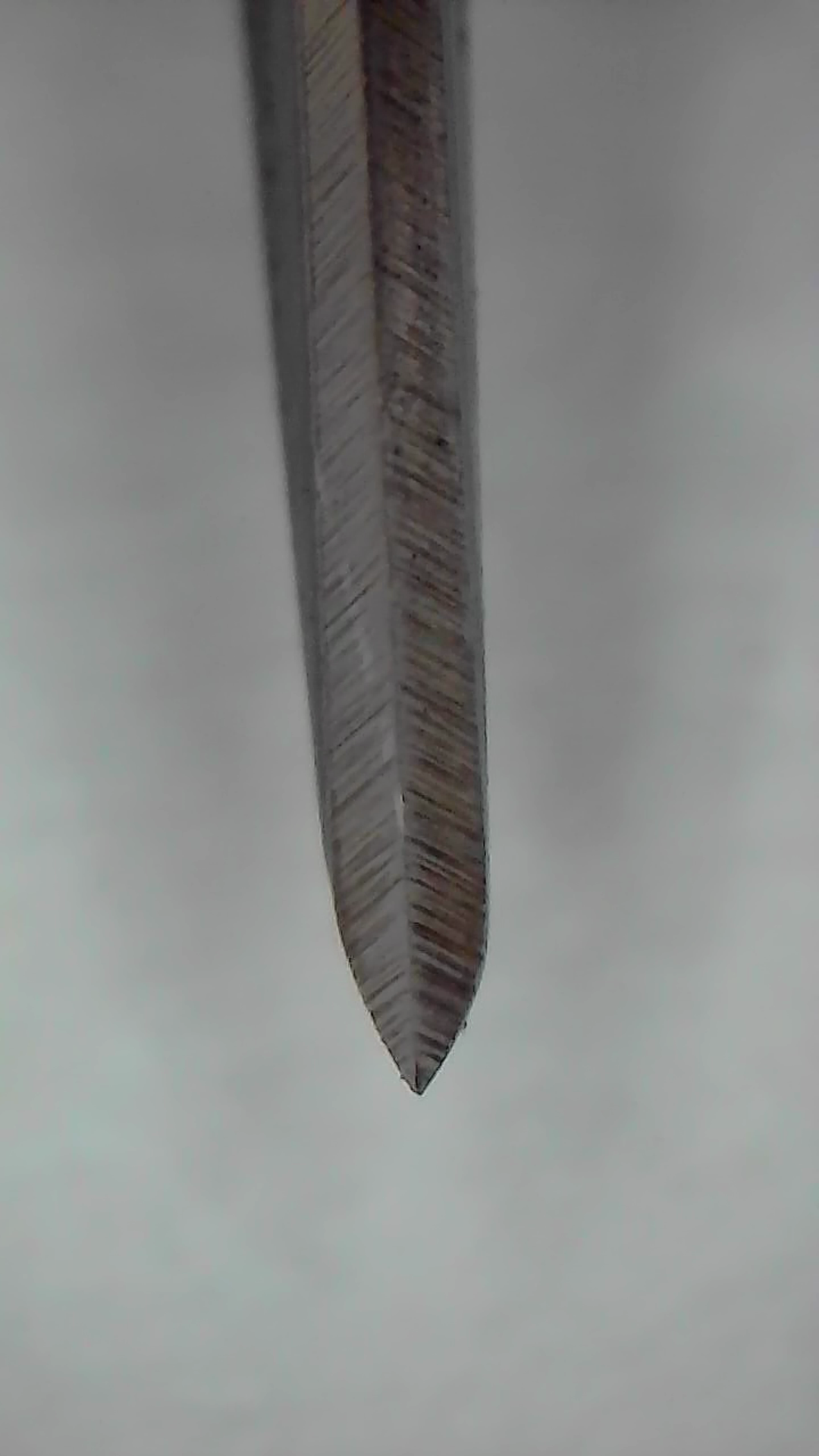
But in accordance with the rites of ancient prophecy, it is inescapably out of true. One side of the grind on mine is precisely 40 degrees, and the other is steeper at about 45. That’s not the real issue, though.
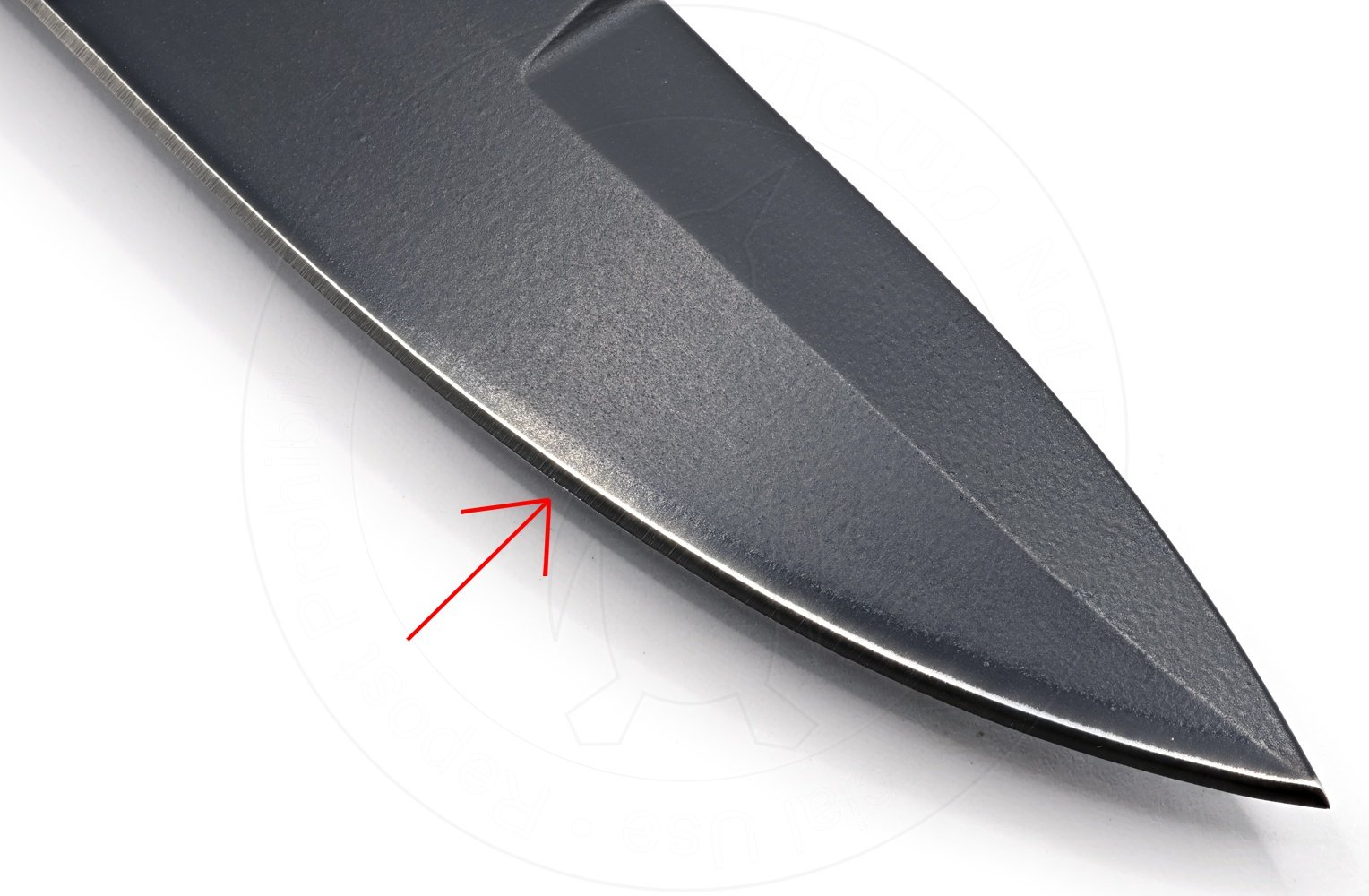
The issue is that mine arrived right out of the package with a nasty ding in the edge. It’s a diabolical one, too: Tough to spot with the naked eye but you can feel it with a fingernail, and right from the factory it prevents you from achieving a clean cut.
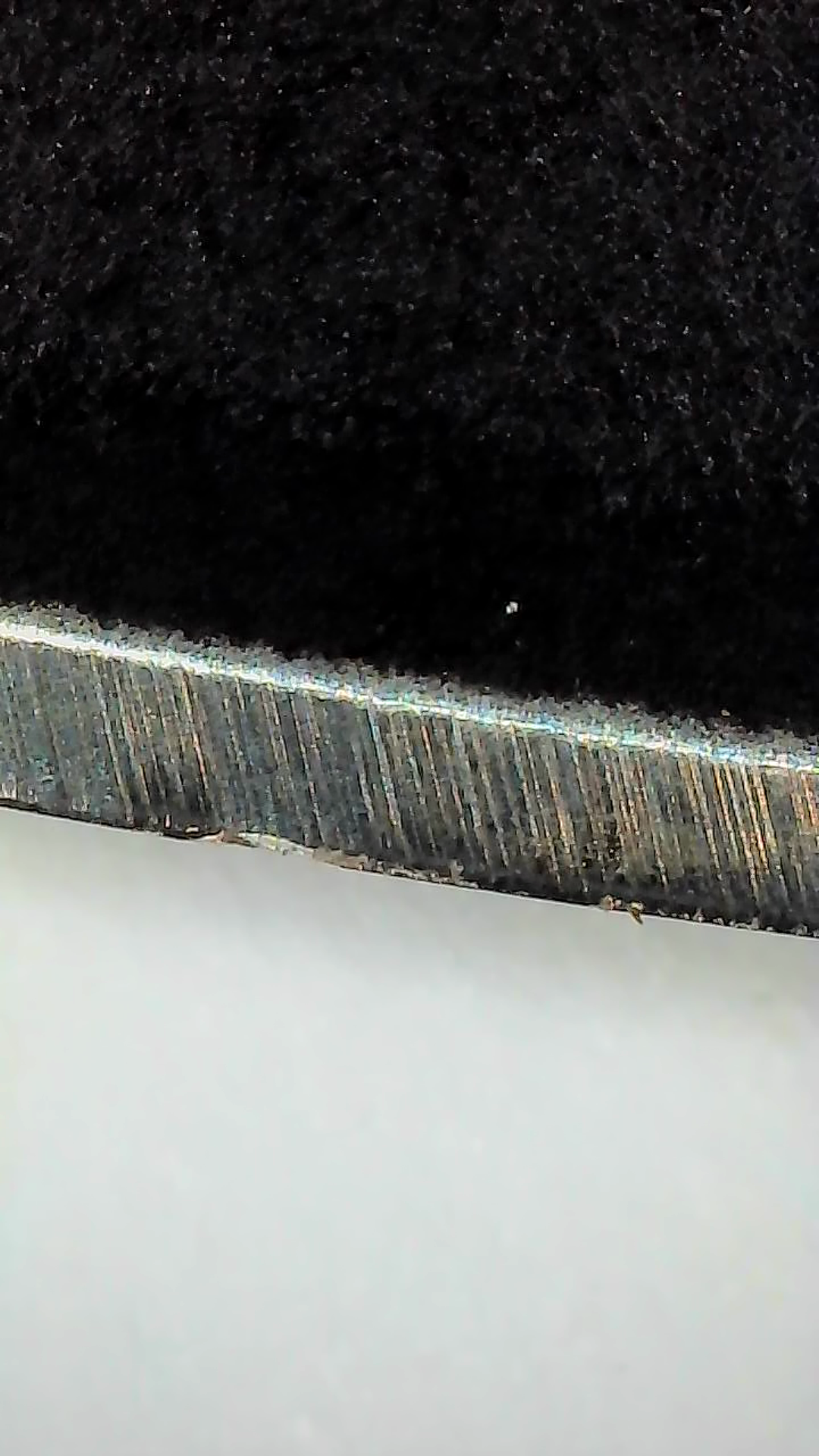
Here it is under magnification, where it’s much more obvious.
It seems something struck the edge of this before it was packaged, and that means we can make two troubling assumptions. First, this happened somewhere along the line and nobody noticed or cared. Second, this isn’t a chip but as you can see the edge has been rolled over, so it’s a sure sign the steel at the edge is very soft.
Another clue is the burnishing in the coating behind the edge, the whole way down its length. This is most likely a telltale that the edge has been “burned,” i.e. when the edge was ground the metal was allowed to get too hot during its grind and thus its lost its heat treating – and its hardness – as a result.
On a lark I put this on the ol’ Spydero sharpener. It sharpened up quite quickly, another sign of soft steel, and after a just couple of quick lashes on the stones it looks like this:

I went just far enough to knock the rolled steel off of the edge where that nick was, which naturally improved its cutting performance dramatically.

But even by the time I was done feathersticking a second Post-It note it was already obvious that the sharpness was diminishing. Make no mistake, paper is definitely an abrasive, and it’ll send you back to your stones eventually. But no modern knife should be fazed by a mere single sticky note.
This is an edge retention result so poor I wouldn’t even bother to piss on it.
The Inevitable Conclusion
So here we are, right back where we started.
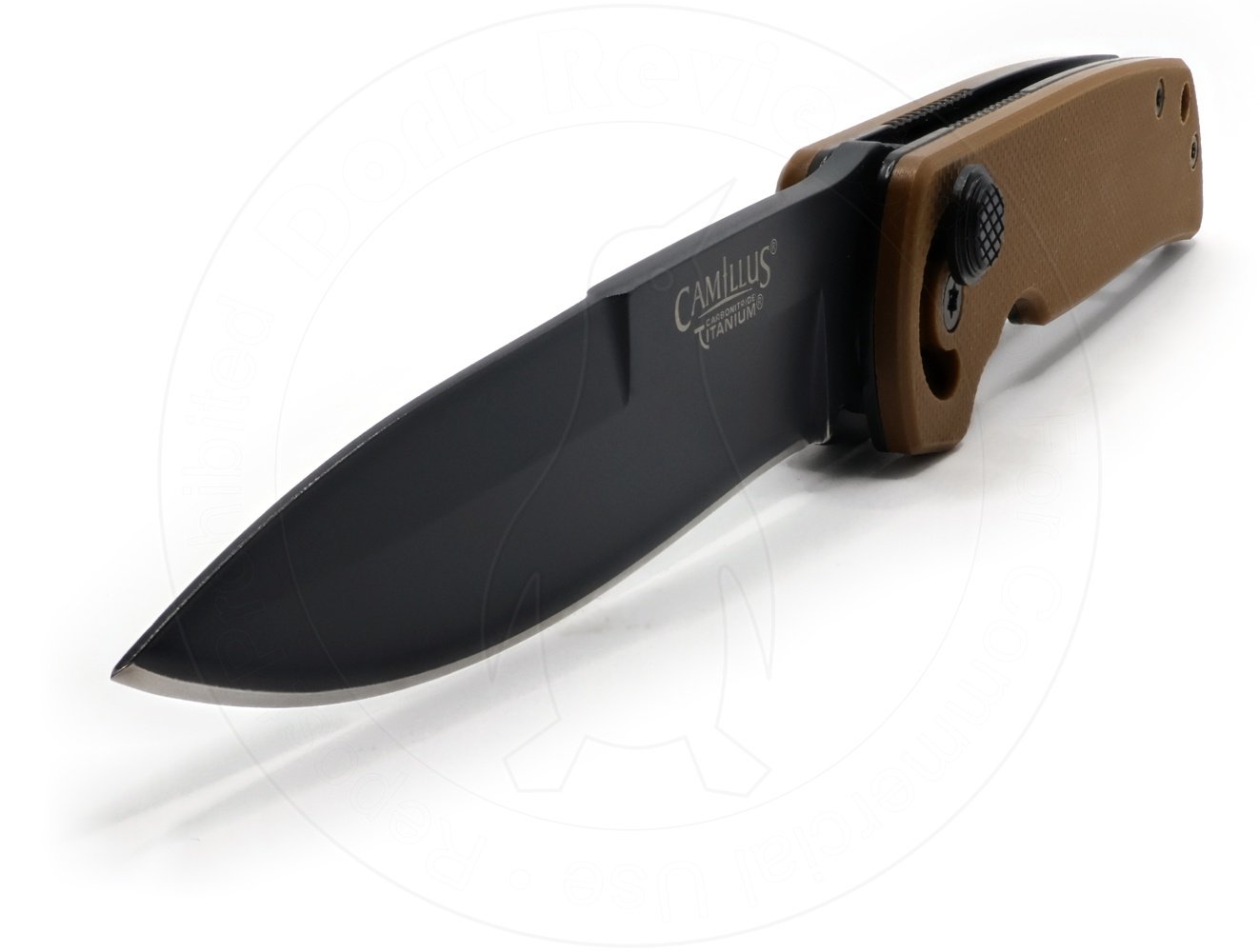
It’s kind of fitting, actually, in a twisted sort of way. Camillus started off as an importer, manufacturing nothing. After a long and shining heyday, a rise and a fall, now their husk is back to doing exactly the same thing: Just bringing in and branding any old thing, all made by somebody else.
And, alas, to little fanfare and not much benefit.
It’s a shame, really. The Cuda Mini has a neat design. It has cool features. It’s a nice size. It has ball bearing pivots.
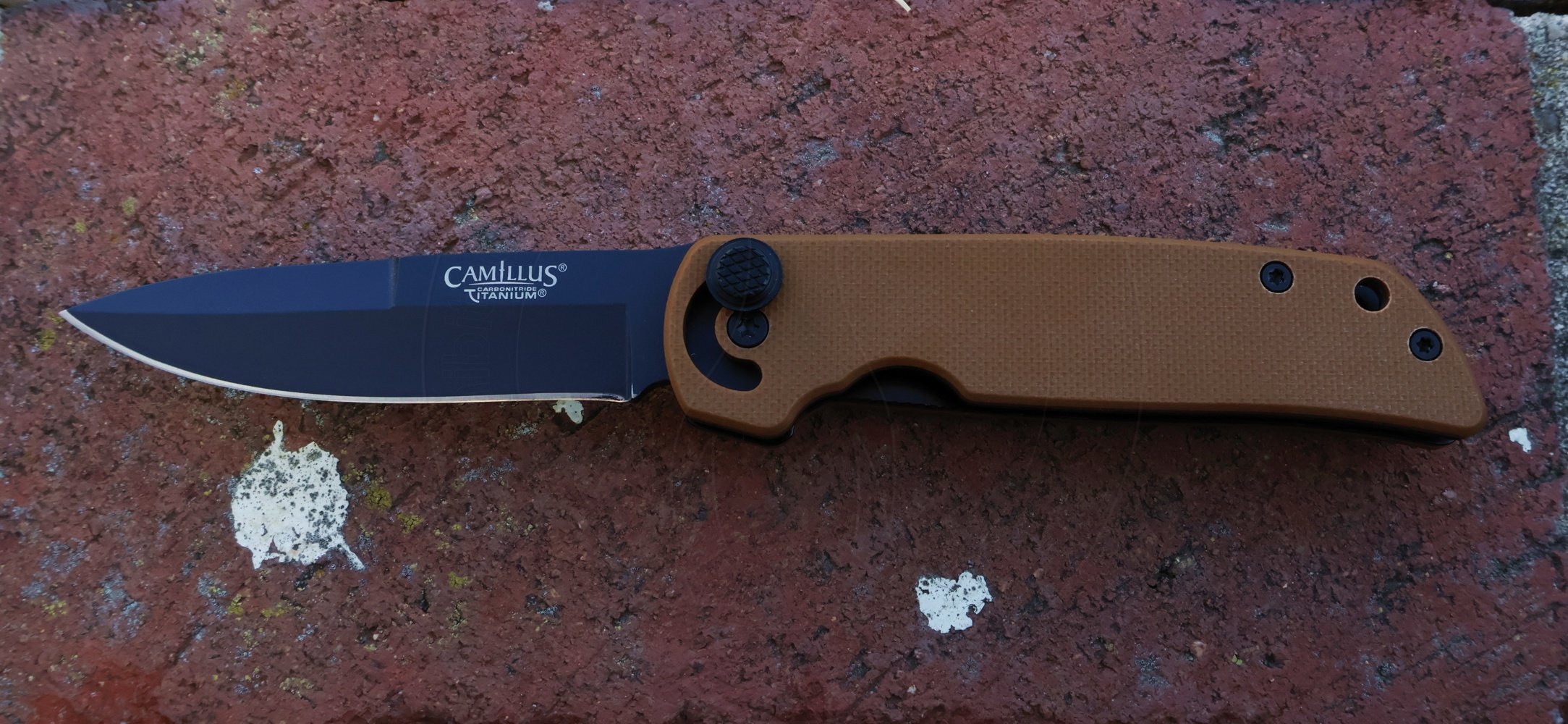
It’s too bad it’s crap.
Between the knife and that brick, I’ll take the brick, thanks.


Man, I remember when those first came out. Everyone tried them because they were unique and cheap. Then everyone hated them because they were cheap lol.
I wanna say the first one I handled was with a patient of mine that bought one. Guy was prone to buying knives or guns when he would end up with more money in his account than he was allowed to have without fucking up his assistance programs that made it possible for him to live at home with family. He’d then sell them off when he needed cash. Weird, and it always ended at a loss, but that’s whatever.
He tried a dozen people, including me, going as low as five bucks. No takers. And I’d usually swap back and forth with him at even money, kinda like a secured loan of sorts. I dug the mechanism of them, but holy crap, were they crap!